Khadas Mind Premium Review: Raptor Lake-P in a Modular Portable Workstation
by Ganesh T S on September 14, 2023 8:00 AM EST- Posted in
- Systems
- Intel
- Mini-PC
- Raptor Lake-P
- Khadas
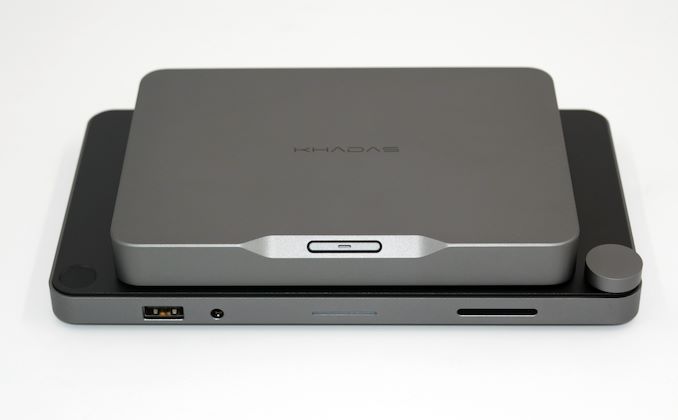
Khadas is a well-known vendor in the ARM-based single-board computer (SBC) circles with boards based on Rockchip and Amlogic SoCs. Recently, the company made its first foray into the small form-factor x86 PC space with a rather unique product family - the Khadas Mind. Unlike regular mini-PCs, the Mind is actually an ecosystem of products created with the aim of bringing a portable modular workstation to the market. Instead of relying on Thunderbolt to achieve this vision, the company has created a proprietary Mind Link connector and interface with an intent to produce a more close-knit set of products.
The main processing unit in the ecosystem is the Khadas Mind, which comes with either an Intel Core i7-1360P (Mind Premium) or an Intel Core i5-1340P (Mind Standard). Equipped with the Mind Link Connector, it can interface to a variety of peripherals such as the Mind Dock and Mind Graphics. While the former provides additional I/Os, the latter is a full-featured eGPU enclosure with a variety of ports. The main unit also includes a small battery that allows the unit to be seamlessly 'hot-plugged' into different peripherals, similar to a notebook.
Khadas sent across the Mind Premium along with the Mind Dock to provide us with an introduction to the Mind ecosystem. This review explores the performance and product experience delivered by Raptor Lake-P in an unusual package.
Introduction and Product Impressions
Advancements in processor architecture and semiconductor manufacturing have resulted in successful replacement of bulky tower desktops with miniaturized computing systems over the last decade. In parallel, notebooks have also become thinner, lighter, and very powerful. On the former front, many vendors are enjoying success with ultra-compact form-factor (UCFF) machines pioneered by Intel with the NUC product line. A few years back, Intel also started to introduce Compute Elements and even notebook platforms under the NUC tag in order to diversify beyond the original UCFF vision.
These compact machines have their limitations in terms of platform power dissipation. Addition of discrete GPUs is usually not possible with the UCFF form-factor, resulting in many use-cases still requiring bulky desktops. eGPU enclosures connected via Thunderbolt / USB4 have started to address this aspect. Notebook platforms have traditionally been limited in terms of supported screen sizes. For many business use-cases in particular, the keyboard and built-in screen lie unused, as the notebook is either docked to a bigger monitor or kept in storage. Some users adopt a thin-client model for their notebook, but multiple devices and the compulsory need for network connectivity may result in pain points associated with file syncing. Khadas has created the Mind product family as a solution to these problems.
The ecosystem consists of the main computing unit and a host of peripherals that interface using a proprietary Mind Link connector. The core computing unit is similar to that of an ultrabook's main board - compact, and limited in terms of I/O. However, the leeway over the unit's thickness (compared to a regular ultrabook) has enabled Khadas to equip the board with a vapor chamber-based cooling system. While the LPDDR5 RAM is soldered, the system comes with two M.2 2230 Gen4 x4 NVMe slots. Khadas doesn't sell barebones versions, but markets two different SKUs that come pre-installed with Windows 11 Home:
- Mind Premium: Core i7-1360P / 32GB of LPDDR5-5200 RAM / 1TB Gen4 x4 NVMe SSD
- Mind Standard: Core i5-1340P / 16GB of LPDDR5-5200 RAM / 512GB Gen4 x4 NVMe SSD
Khadas has plans for a large number of peripherals:
- Mind Dock: I/O expansion with additional network ports, video outputs, audio subsystem, and USB ports.
- Mind Graphics: eGPU enclosure with the NVIDIA RTX 4060Ti and additional I/O ports.for the gaming market.
- Mind Studio: Large touchscreen monitor with additional GPU for creative professionals.
- Mind xPlay: 2-in-1 tablet / notebook conversion kit (portable monitor with keyboard)
- Mind Talk: Conference room conversion kit
Currently, the company already has the Mind Dock ready to ship (it came in as part of our review package along with the Mind Premium), and the Mind Graphics is expected to ship in June 2024. The other peripherals are still in the planning stages.
The Mind Premium package comes with the main unit and USB-PD compliant Type-C adapter (up to 65W) and a braided Type-C cable along with it. A warranty card and a quick start guide are also included.
The gallery below presents the external industrial design of the main unit as well as the Mind Dock.
The main unit is a compact rectangular slab measuring 146mm x 105mm x 20mm, with a weight of 450g. The rounded edges and metal enclosure lend it a solid look and feel. Unfortunately, the core unit is rather anemic in terms of I/O. There are three display outputs - a HDMI port, and two Type-C ports. Either of the Type-C ports can be used to connect the power adapter, but they also support data transfer as detailed below. There are two USB 3.2 Gen 2 Type-A ports. The absence of USB4 / Thunderbolt 4 is a major letdown, though.
The Mind Dock provides wired networking support, a 3.5mm headphone jack, a SDXC UHS-II card slot and multiple USB 3.2 Gen 1 Type-A ports. Two HDMI 2.0 ports are also included. The Mind Dock also has a fingerprint reader and a volume control knob. Speakers are also built into the dock.
Khadas provided a full-blown teardown picture of the Mind Standard along with their press package.
The main unit is equipped with a Western Digital SN740 NVMe SSD, while the Samsung LPDDR5-5200 RAM chips are soldered. A 5.55Wh battery is also included - similar to a notebook platform. However, the battery is not meant to be used for regular operation in the absence of power input. Rather, it is meant to aid in hot-plugging and allowing the system to go to sleep without having to shut down in the absence of external power. Khadas promises up to 25 hours of standby in such scenarios.
The full specifications of the review sample (as tested) are summarized in the table below. We evaluate two configurations - one with just the Mind Premium, and another with the Mind Dock.
| Systems Specifications (as tested) |
||
| Khadas Mind Premium | Khadas Mind Premium + Mind Dock | |
| Processor | Intel Core i7-1360P Raptor Lake 4P + 8E / 16T, up to 5.0 GHz (P) up to 3.7 GHz (E) Intel 7, 18MB L2, Min / Max / Base TDP: 20W / 64W / 28W PL1 = 28W, PL2 = 64W |
Intel Core i7-1360P Raptor Lake 4P + 8E / 16T, up to 5.0 GHz (P) up to 3.7 GHz (E) Intel 7, 18MB L2, Min / Max / Base TDP: 20W / 64W / 28W PL1 = 28W, PL2 = 64W |
| Memory | 32GB LPDDR5-5200 Soldered 64-48-48-112 @ 5200 MHz 4x8 GB |
32GB LPDDR5-5200 Soldered 64-48-48-112 @ 5200 MHz 4x8 GB |
| Graphics | Intel Iris Xe Graphics (96EU @ 1.50 GHz) |
Intel Iris Xe Graphics (96EU @ 1.50 GHz) |
| Disk Drive(s) | Western Digital PC SN740 SDDQTQD-1T00 (1 TB; M.2 2230 PCIe 4.0 x4 NVMe;) (Western Digital 112L BiCS5 3D TLC NAND; SanDisk 20-82-10081 DRAM-less Controller) |
Western Digital PC SN740 SDDQTQD-1T00 (1 TB; M.2 2230 PCIe 4.0 x4 NVMe;) (Western Digital 112L BiCS5 3D TLC NAND; SanDisk 20-82-10081 DRAM-less Controller) |
| Networking | Intel Wi-Fi 6E AX211 (2x2 802.11ax - 2.4 Gbps) | Realtek RTL8156 2.5 GbE Controller (via Mind Link / USB) Intel Wi-Fi 6E AX211 (2x2 802.11ax - 2.4 Gbps) |
| Audio | Digital audio with bitstreaming support over HDMI | USB audio codec (via Mind Link / USB) (3.5mm audio jack in front) Digital audio with bitstreaming support over HDMI |
| Video | 1x HDMI 2.0 (Rear) 2x Display Port 1.4a over Type-C Alt-Mode (Rear) |
1x HDMI 2.0 (Rear on Main Unit, HDR Supported) 2x HDMI 2.0 (Rear on Dock, No HDR) 2x Display Port 1.4a over Type-C Alt-Mode (Rear on Main Unit) (max. 4 displays) |
| Miscellaneous I/O Ports | 2x USB 3.2 Gen 2 Type-A (Rear) 1x USB 3.2 Gen 2 Type-C (Rear, with DP Alt Mode and PD Input) 1x USB 2.0 Type-C (Rear, with DP Alt Mode and PD Input) |
2x USB 3.2 Gen 2 Type-A (Rear on Main Unit) 1x USB 3.2 Gen 2 Type-C (Rear on Main Unit, with DP Alt Mode and PD Input) 1x USB 2.0 Type-C (Rear on Main Unit, with DP Alt Mode and PD Input) 1x SDXC UHS-II Card Reader (Front on Dock) 1x USB 3.2 Gen 1 Type-A (Front on Dock) 2x USB 3.2 Gen 1 Type-A (Rear on Dock) 1x USB-C Power Input (Rear on Dock) |
| Operating System | Windows 11 Enterprise (22000.2360) | Windows 11 Enterprise (22000.2360) |
| Pricing | US $1099 (as configured, with Windows 11 Home OS) | US $1278 (as configured, with Windows 11 Home OS) |
| Full Specifications | Khadas Mnd Specifications | Khadas Mnd Specifications |
In the next section, we take a look at the system setup and follow it up with a detailed platform analysis.


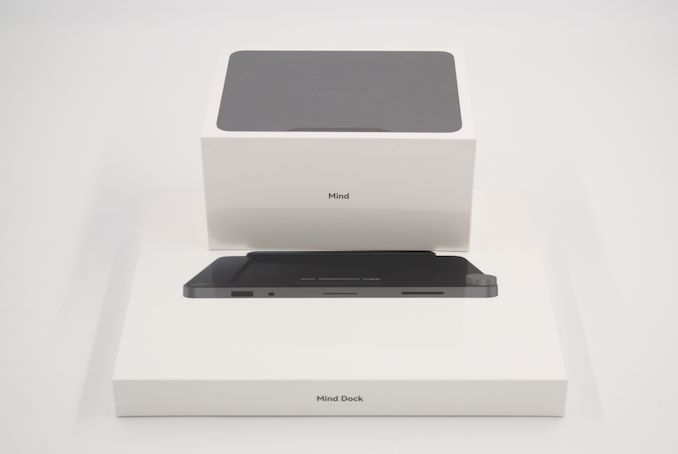
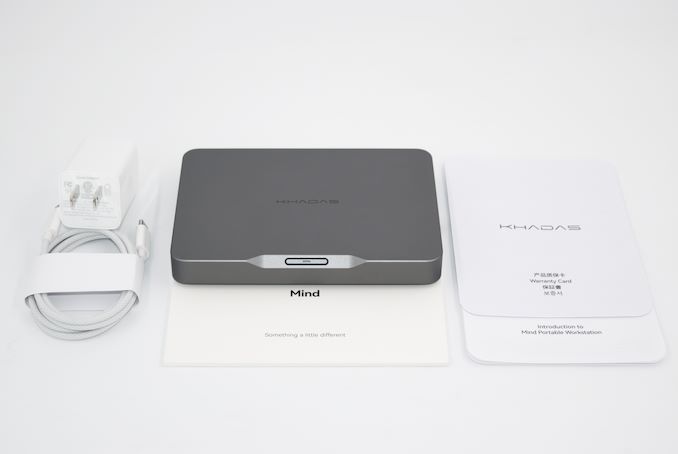






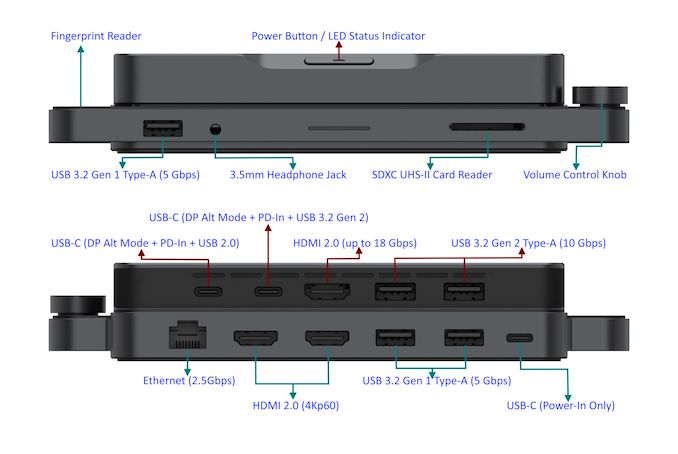
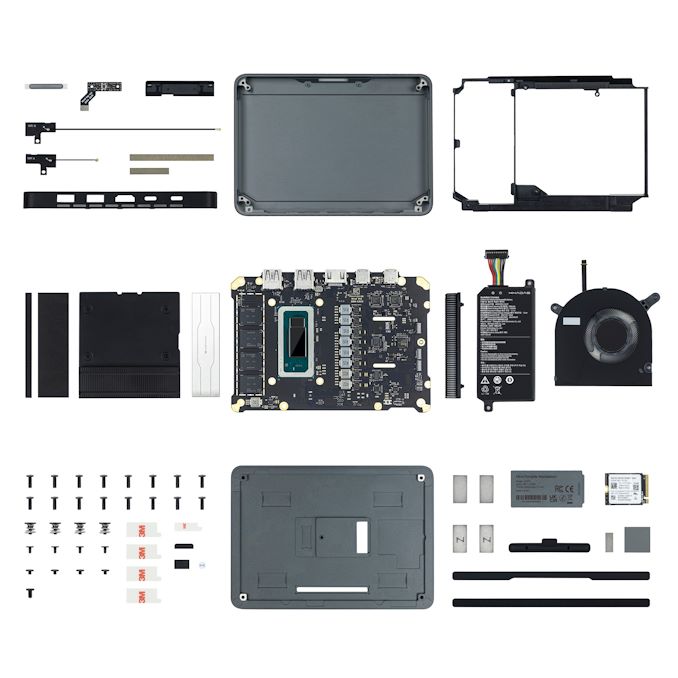








20 Comments
View All Comments
peterfares - Friday, September 15, 2023 - link
This is really cool, but who is this for? Replyabufrejoval - Friday, September 15, 2023 - link
I’d say it’s mostly for commuters, who’ll oscillate between two or more workplaces with high frequency and regularity, but don’t want to carry more than the “soul” of the computer with them.When I do that, I tend to make that a VM I keep on a high-speed USB stick and I then suspend the VM when I commute. Get’s the job done with a bit of overhead but in a smaller form factor but it means having a physical computer at every workplace and other compromises.
Having a full-sized GPU dock on every location might be somewhat difficult in terms of budget, but a power primary and somewhat after-hours secondary, might be enough to satisfy a large part of the user base.
Being able to just pick up the running machine right in the middle of something and then try catching a train or plane running might seem attractive, but Windows tends to glitch in far too many ways to make that realistic.
I’ve had far too many Windows laptops being woken up from some powersave or even hibernation slumber in the middle of a flight, ostensibly for scheduled maintenance, only to then have them cook themselves and their battery to death for lack of cooling in the onboard luggage: I guess I should be glad they didn’t go as far as combusting, but generally I wound up without a working machine on the busy end of the trip…
If you own a tiny home, operate in a boat, trailer or some other space constrained place this could be cool, but with an eye on longevity I’d not risk anything that wasn’t standards based and if TB isn’t enough, including dGPU, it’s really just tough luck.
BTW, I do believe they offer TB and not just USB4, they just don’t have the certification done, because they do mention eGPU on their website.
Pre-configured only: 32GB is certainly better than 16, even if I’d go for 64, especially at current prices for DRAM. The M.2 slots are only 30mm length so there wasn’t that much variety in terms of updates anyway, but that is currently changing because of these Steam console class devices. I guess the reason they won’t let you open the device is mostly to cut down on customer service issues, because there is just too many people out there who overestimate their technical skills and dexterity.
I guess mostly it just inspired me into looking using a NUC for this commute style use case instead. They aren’t really that much bigger than this, especially if you don’t carry a power brick. Having to make sure they are properly hibernated, isn’t that much of an issue and they are far more economical. Reply
brucethemoose - Friday, September 15, 2023 - link
> 64-48-48-112 @ 5200Whoa, is this a typo?
The timings seem awfully loose, like waay above default JEDEC. Reply
meacupla - Friday, September 15, 2023 - link
I can't even find what JEDEC specifies for LPDDR5Timings for LPDDR have always been looser than their regular counterparts.
They clock higher at lower voltages, and the timings are loose as a result. Reply
Kamen Rider Blade - Friday, September 15, 2023 - link
So, instead of creating a "Proprietary Standard"?Why don't they use the existing PC/104 stacking Board standard that has been around for decades? Reply
meacupla - Saturday, September 16, 2023 - link
PC/104 is meant for internal only. It has exposed and unsupported pins, which makes it easy to bend the pins. It's fragile.This slot connector is a more robust design.
Having said that, oculink and TB4 are plenty robust and have an existing market. Reply
Kamen Rider Blade - Saturday, September 16, 2023 - link
You do know that PC/104 has updated to PCIe/104 and uses PCIe connectors that are plenty strong. Version 3 of the spec has been ratified since Feb 17, 2015.Also it would be pretty easy for them to figure out how to create a base board to stack modules onto given the modular nature.
They could've used a EPIC or EBC MoBo base board and stack modules on top. Reply
meacupla - Saturday, September 16, 2023 - link
not my fault you named the wrong spec Replysjkpublic@gmail.com - Sunday, September 17, 2023 - link
One main difference between this and other NUC's is the LPDDR5. This could have been a show stopper if they broke the 64GB barrier. Would consider a 128GB LPDDR5 memory version. Otherwise not much to see here. Replyxol - Wednesday, September 20, 2023 - link
Polite reminder that "industrial design" means designing a product to be mass produced, not edgelord brushed titanium designed to convinced suckers a product is worth twice its equivalent value Reply